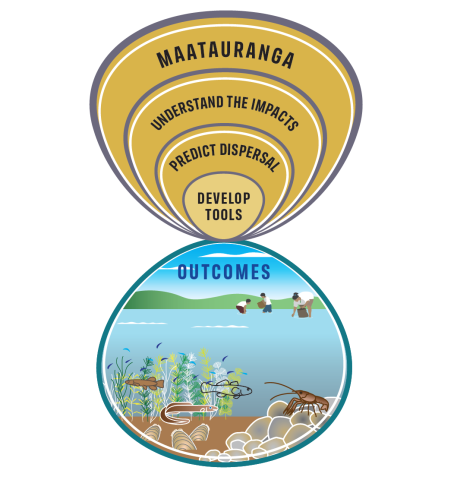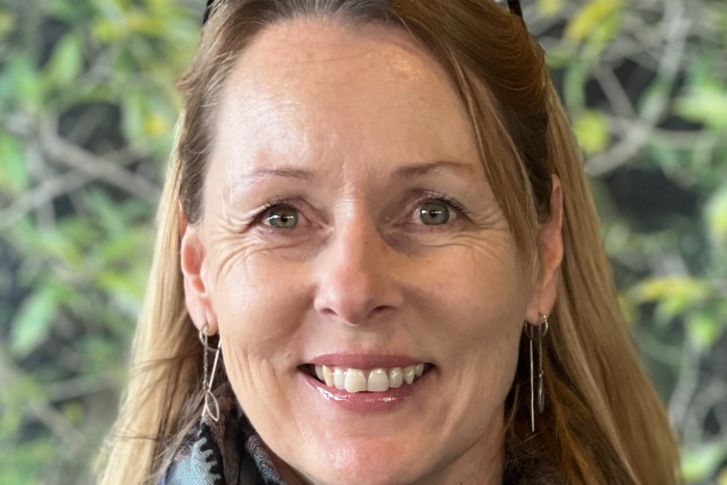Stopping the spread of the freshwater gold clam (Corbicula fluminea) is of critical importance for preserving native biodiversity, protecting infrastructure, and maintaining the cultural and recreational value of Aotearoa-New Zealand's waters.
Alongside establishing practical control methods, the research programme will determine the gold clam’s ecological, social, cultural and economic impacts in Aotearoa-New Zealand, and predict its spread for early detection and targeted intervention.
A programme anchored by mātauranga and partnerships
Building relationships between diverse knowledge systems, particularly Mātauranga Māori with scientific research, underpins our work. Our approach is holistic, ensuring that all aspects of the programme are informed by Mātauranga concepts and partnerships, in doing so supporting indigenous perspectives and values in environmental management.
Impacts
Establishment of a solid understanding of gold clam ecology and direct impacts (ecological, economic, and social) in an Aotearoa-New Zealand context is critical for the effective application of control tools and predictive modelling.
The scope includes:
- Determining reproductive ecology under local conditions to identify vulnerable life-stages, and their timing so that they can be targeted for control
- Understanding the potential impact of gold clam on benthic species including threatened native species and plankton communities
- Quantifying expected economic costs associated with increasing clam population over time.
Predictions
Predictive models
Developing models to predict dispersal and establishment, enabling the prioritisation of resources for surveillance and intervention to at-risk locations. Models (hydrodynamic particle transport, intersystem dispersal, and habitat suitability) will be integrated and calibrated, and then used to predict gold clam dispersion for different scenarios, with illustrative maps as outputs.
Tools
Co-developing a suite of control tools that target vulnerable gold clam life-stages to disrupt dispersal, reduce the risk of transfer, and to manage gold clam at different scales, including site-based eradication.
This encompasses novel control methods advances the use of benthic barriers and conventional approaches. For example, benthic barrier research will involve testing of international and New Zealand specific materials and designs to determine their effectiveness in eliminating clam populations.
Methods will integrate conventional control tools with Mātauranga Māori, and leverage insights from other research areas within the programme (e.g., gold clam reproductive ecology).
Successful and ecologically safe strategies, proven to be non-harmful to native species, will be scaled up for field trials. These trials will be designed in partnership with iwi, stakeholders, and international experts.
Evaluating the effectiveness of conventional control tools will also be assessed with a view to how these methods can be adapted and integrated with novel approaches being co-developed.
Project timeline

Acknowledgements
Contributors: Dr Deborah Hofstra, Dr Michele Melchior, Dr Elizabeth Graham, Karen Thompson, Dr Anika Kuczynski, Dr Aidin Jabbari, Dr David Plew, Karl Safi, Dr Wei Yang, Dr Zoe Qu, Niketi Toataua, Poto Davies, Dr Ian Duggan, Dr Jenni Stanley, Prof Frances Lucy, Prof Jaimie Dick
Collaborators: Ngāti Koroki Kahukura, Ministry for Primary Industries, Department of Conservation, Waikato Regional Council, University of Waikato, Atlantic Technological University (Sligo), Queen’s University (Belfast)
Funding: MBIE Endeavour programme


